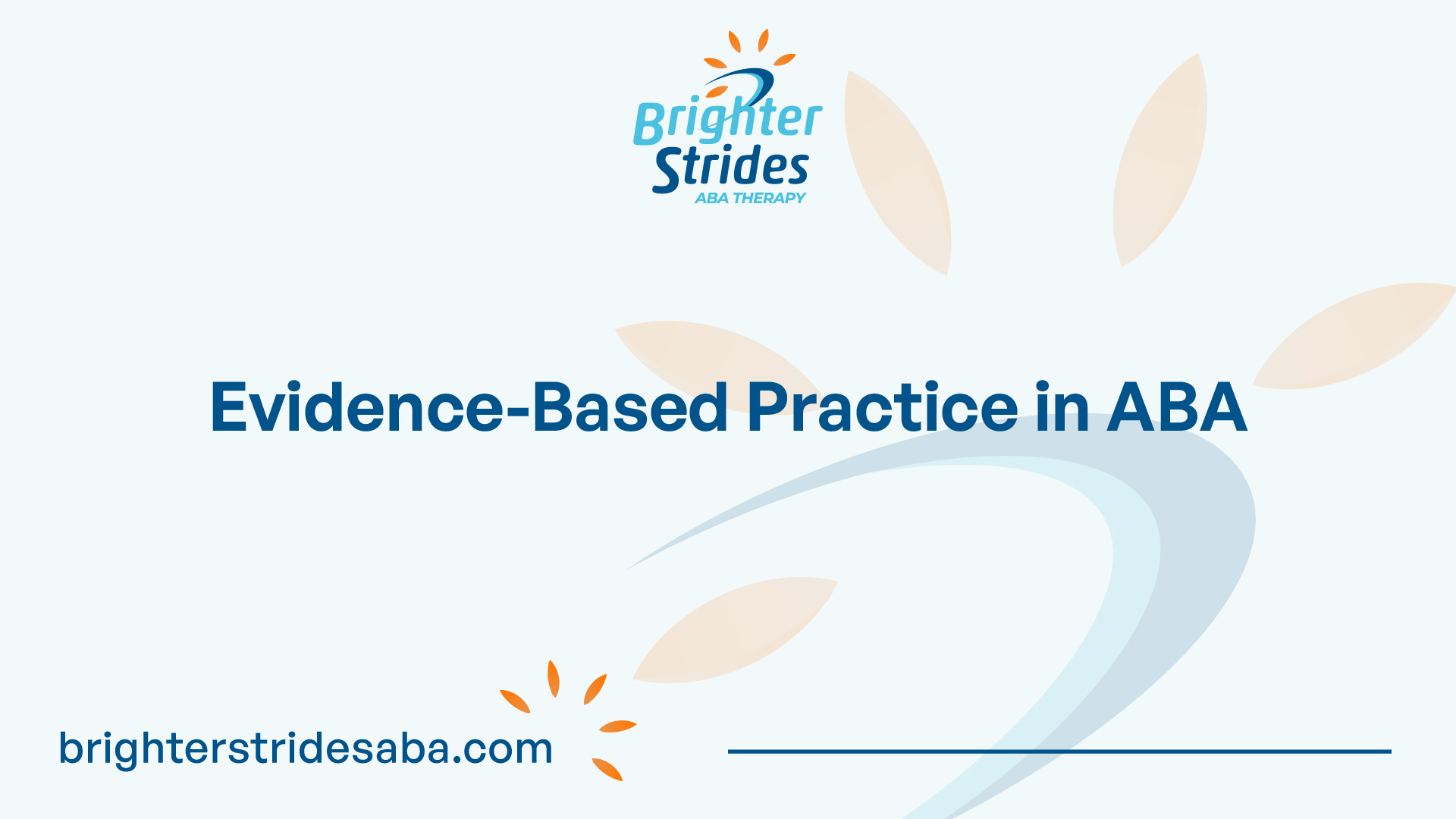
Roles of ABA Therapists
ABA therapists, also known as behavior analysts, play a crucial role in helping individuals with developmental or intellectual disabilities, such as autism, to improve their social skills and address behavioral issues. They work closely with their clients to implement behavior intervention plans (ABA behavior support plans) and provide tailored treatment plans to meet their unique needs.
Responsibilities and Duties
The responsibilities and duties of ABA therapists vary depending on the specific needs of their clients and the setting in which they work. Here are some key responsibilities typically associated with the role of an ABA therapist:
- Conducting assessments: ABA therapists assess their clients’ behavior patterns, strengths, and areas of improvement to develop effective treatment plans. This may involve collecting data, conducting interviews, and observing their clients’ behavior in various settings.
- Designing and implementing treatment plans: Based on the assessments, ABA therapists develop behavior intervention plans (BIPs) that outline specific goals and strategies to address problematic behaviors and teach new skills. They then implement these plans during therapy sessions (ABA therapy sessions) to help their clients make progress.
- Providing skill training: ABA therapists focus on teaching a wide range of skills to their clients, including communication, social, and independent living skills. They use evidence-based techniques and strategies to promote skill acquisition and generalization.
- Monitoring progress: ABA therapists regularly track and monitor their clients’ progress, collecting data to evaluate the effectiveness of the treatment plans. This allows them to make necessary adjustments and modifications to ensure continued progress.
- Collaborating with the team: ABA therapists often work as part of a team that includes other professionals, such as psychologists, speech therapists, and educators. They collaborate with these team members to ensure a comprehensive approach to their clients’ treatment.
Work Environments
ABA therapists work in various settings, depending on the needs and preferences of their clients, as well as the approach used by the ABA agency or individual provider. The main work environments for ABA therapists include:
- Home: Many ABA therapy sessions take place in the home setting. This allows therapists to create a safe and familiar environment for their clients, promoting generalization of skills learned at home to other settings.
- School: ABA therapists often work in schools as part of a child’s Individualized Education Program (IEP) team. They collaborate with educators and other professionals to help students achieve their behavioral, social, communication, and play goals.
- Clinic: Some ABA providers offer services in clinic settings, where structured environments with various instructional and play materials are available to target different skills. However, not all ABA agencies offer in-clinic sessions.
- Community: ABA therapists also work in the community setting, engaging in activities like trips to stores, parks, and ice cream shops. This allows them to facilitate the generalization of skills learned in other settings and work on novel goals that cannot be addressed at home or school.
By working in these varied environments, ABA therapists create opportunities for their clients to learn and generalize skills across different contexts, ultimately promoting their independence and overall development.
Behavior Intervention Plans (BIPs)
A crucial aspect of the role of ABA therapists is the development and implementation of Behavior Intervention Plans (BIPs). These plans serve as blueprints for changing behavior, guiding treatment, and ensuring consistent responses to behaviors. By identifying the functions of behavior and selecting appropriate interventions, ABA therapists aim to reduce challenging behaviors and reinforce positive ones.
Importance of BIPs
Behavior Intervention Plans are essential tools in the field of ABA Therapy. They provide a structured approach to addressing challenging behaviors and promoting positive behavior change. A well-designed BIP takes into account the unique needs and goals of the individual receiving therapy. It outlines specific strategies and interventions to be implemented by therapists, caregivers, and educators.
A key aspect of BIPs is the understanding that behavior change is not solely the responsibility of the individual receiving therapy. Instead, behavior plans recognize that the environment and the responses of those interacting with the individual play a crucial role in behavior change [3]. By addressing environmental factors and providing consistent responses, BIPs create an environment that supports behavior change and promotes success.
In educational settings, BIPs are often required by the Individuals With Disabilities Education Act (IDEA) when a child’s behavior threatens their current school placement and is a manifestation of their disability. These plans provide a framework for ensuring that the child’s educational needs are met while promoting positive behavior and minimizing challenging behaviors.
Development and Implementation
The development and implementation of a Behavior Intervention Plan involve several important steps. ABA therapists work closely with the individual receiving therapy, their caregivers, and other professionals involved in their care to create a comprehensive plan tailored to their specific needs.
- Functional Behavior Assessment (FBA): Before developing a BIP, an assessment is conducted to identify the functions of the individual’s behavior. This assessment helps determine why the behavior is occurring and informs the selection of appropriate interventions.
- Identifying Antecedents and Reactions: ABA therapists gather data to create a framework for the BIP. This may involve identifying antecedents (events that occur before the behavior) and reactions (responses to the behavior). This information helps in targeting specific behaviors and developing effective strategies [4].
- Selecting Interventions: Based on the functional behavior assessment and analysis, ABA therapists select interventions that are evidence-based and tailored to the individual’s needs. These interventions may include strategies such as reinforcement, visual supports, social stories, and communication training [4].
- Implementation and Monitoring: Once the BIP is developed, it is implemented by the therapist, caregivers, and educators. Consistency and ongoing progress monitoring are essential to gauge the effectiveness of the interventions and make any necessary adjustments.
By following these steps, ABA therapists can create effective Behavior Intervention Plans that promote positive behavior change and support the individual’s overall development. Regular evaluation and adjustments ensure that the plan remains relevant and responsive to the individual’s changing needs.

ABA Therapist Specializations
ABA therapists play a crucial role in helping individuals with autism and other developmental disabilities develop essential skills and overcome challenging behaviors. While ABA therapists have consistent responsibilities across various techniques and work environments, there are specializations within the field that focus on tailoring treatment plans to meet the unique needs of each patient.
Tailored Treatment Plans
One of the key aspects of ABA therapy is the development and implementation of tailored behavior intervention plans. A behavior intervention plan, or BIP, is an individualized set of strategies designed to address specific behavioral challenges and promote positive behavior change. ABA therapists work closely with behavior analysts to create these plans, ensuring that they are customized to the needs of each patient.
Tailored treatment plans take into account the individual’s strengths, weaknesses, and specific goals. For example, a BIP may focus on improving communication skills, social skills, play, self-care, or other life skills. ABA therapists break down complex tasks into smaller, manageable steps, model actions, and create motivating environments for learning. By tailoring treatment plans to the unique needs of each patient, ABA therapists maximize the effectiveness of the therapy and promote meaningful progress.
Unique Patient Needs
Every patient receiving ABA therapy has unique needs and challenges, requiring ABA therapists to adapt their approaches accordingly. ABA therapists work with a diverse range of individuals, including children and adults diagnosed with autism or other developmental disabilities [7]. They collaborate with behavior analysts to review progress and identify effective strategies for the learner’s development.
ABA therapists address the specific needs of each patient, whether it’s helping them develop academic skills, communication skills, independent living skills, or coping strategies. By tailoring interventions to meet the unique needs of their patients, ABA therapists create a safe environment for individuals to participate in learning-based activities and develop communication skills that lead to a more independent future.
Through tailored treatment plans and a focus on addressing unique patient needs, ABA therapists ensure that the therapy is individualized and effective in helping patients reach their full potential. By applying practical strategies and emphasizing specific goals, ABA therapists play a vital role in supporting individuals with autism and other developmental disabilities on their journey towards greater independence and improved quality of life.
Ethical Guidelines for ABA Therapists
Ensuring ethical conduct is of utmost importance for ABA therapists, as they work closely with vulnerable individuals during behavior intervention sessions. To guide their practice, ABA professionals adhere to a code of ethics, such as the BACB Ethics Code, which provides a framework for responsible and ethical behavior. Let’s explore the BACB Ethics Code overview and how professional ethics are put into practice.
BACB Ethics Code Overview
The BACB Ethics Code is a set of guidelines that behavior analysts are required to study and follow to protect both patients and practitioners in behavior intervention sessions. The code is framed around four core principles that guide ABA professionals in responsible ethics:
- Responsibility to Clients: ABA therapists prioritize the welfare and rights of their clients. They strive to provide effective services, respect client autonomy, and maintain confidentiality and privacy.
- Responsibility to the Profession: ABA therapists engage in professional development, maintain competence, and follow ethical guidelines to uphold the integrity of the profession.
- Responsibility to Colleagues: ABA therapists collaborate with colleagues, promote a supportive professional environment, and respect the rights and welfare of other professionals.
- Responsibility to the Public: ABA therapists contribute to the well-being of society, promote ethical behavior, and address the needs of diverse communities.
The BACB Ethics Code is subject to revisions and amendments to ensure its relevance and applicability. The code was last updated at the beginning of 2022 [5].
Professional Ethics in Practice
Professional ethics play a vital role in guiding the behavior and decision-making of ABA therapists. The adherence to professional ethics is crucial to protect consumers, make appropriate decisions, and ensure socially valid practices.
Ethical decision-making in ABA therapy involves considering the best interests of clients, respecting their dignity and autonomy, promoting justice, maintaining professional integrity, taking responsibility for actions, and demonstrating competence. By upholding these principles, ABA therapists provide high-quality and ethical services to their clients.
The Behavior Analyst Certification Board (BACB) enforces the BACB Ethics Code through their Code-Enforcement Procedures. This enforcement ensures that ABA therapists uphold the ethical standards of the profession, contributing to a safe and supportive environment for patients [5].
By adhering to the BACB Ethics Code and practicing professional ethics, ABA therapists prioritize the well-being and rights of their clients. Upholding ethical standards not only safeguards the clients but also maintains the integrity and professionalism of the ABA profession.

Evidence-Based Practice in ABA
In the field of Applied Behavior Analysis (ABA), evidence-based practice (EBP) plays a crucial role in guiding therapists in providing effective and ethical interventions. EBP integrates the best available evidence, clinical expertise, and client values to support decision-making and ensure high-quality care.
Integration of Evidence, Expertise, and Client Values
The integration of evidence, expertise, and client values is a fundamental principle of EBP in ABA. It involves considering the most current and relevant research findings when making clinical decisions, while also recognizing the unique needs and preferences of each client. By combining research evidence with the knowledge and experience of the therapist, treatment plans can be tailored to address specific goals and challenges.
Therapists who follow EBP principles in ABA engage in ongoing learning and professional development to stay up-to-date with the latest research and best practices. They strive to provide interventions that have been shown to be effective through empirical evidence, while also considering the individual characteristics and circumstances of their clients.
To ensure the integration of client values, therapists actively involve clients and their families in the decision-making process. This collaborative approach helps to establish treatment goals that are meaningful and aligned with the client’s values and preferences. By incorporating client values, therapy becomes more person-centered and individualized, increasing the likelihood of successful outcomes.
Alignment with Ethical Decision-Making
EBP in ABA also aligns closely with ethical decision-making. The Behavior Analyst Certification Board (BACB) has established an Ethics Code that guides behavior analysts in practicing ethically [8]. EBP provides a framework to support ethical decision-making by ensuring that treatment decisions are based on the best available evidence.
By following EBP principles, behavior analysts demonstrate professional integrity, responsibility, competence, and pragmatism. They are committed to identifying the best available evidence, critically evaluating its quality and relevance, and using ongoing progress monitoring to assess the effectiveness of interventions. This process not only ensures that clients receive evidence-based interventions but also promotes transparency and accountability in the therapeutic process.
Ethical decision-making in ABA is driven by the goal of maximizing the benefits for clients while minimizing any potential harm. It involves respecting the dignity and autonomy of individuals, promoting justice, maintaining professional integrity, upholding responsibility, and demonstrating competence. By adhering to these ethical principles and integrating evidence-based practices, ABA therapists can provide high-quality, effective, and ethical care to their clients.
In the next section, we will explore the impact of EBP on ABA practice, including its role in ethical decision-making and ongoing progress monitoring.
Impact of EBP on ABA Practice
Within the field of applied behavior analysis (ABA), the integration of evidence-based practice (EBP) has had a significant impact on the way ABA therapists approach their work. EBP in ABA involves combining the best available evidence with clinical expertise and client values to support decision-making [8]. This section focuses on two important aspects of how EBP influences ABA practice: the framework for ethical decision-making and ongoing progress monitoring.
Framework for Ethical Decision-Making
EBP of ABA provides a framework that aligns with the Behavior Analyst Certification Board’s (BACB) Ethics Code. This framework supports ABA therapists in making ethical decisions by integrating the best available evidence with clinical expertise and client values [8]. It emphasizes the importance of providing services based on research literature, adapting interventions based on assessment results, and using ongoing progress monitoring to demonstrate treatment effects.
By following this framework, ABA therapists ensure that their decisions are guided by ethical principles of professional integrity, responsibility, competence, and pragmatism. It enables them to make informed choices that benefit their clients while avoiding harm. The framework also allows for flexibility, recognizing that the Ethics Code may evolve over time to meet the changing needs of the profession [8].
Ongoing Progress Monitoring
Ongoing progress monitoring is a key component of EBP in ABA. Behavior analysts engaging in EBP are required to use ongoing progress monitoring to assess the effectiveness of treatments. This process involves identifying the best available evidence, assessing the evidence for “bestness,” and continually monitoring the progress of their clients [8].
By monitoring progress, ABA therapists can determine whether the interventions they are using are producing the desired outcomes. This allows for adjustments to be made to treatment plans, ensuring that interventions are tailored to the unique needs of each client. Ongoing progress monitoring aligns with ethical principles of professional integrity, responsibility, competence, and pragmatism, as it promotes the delivery of effective and evidence-based interventions.
In conclusion, the integration of EBP within ABA practice has had a profound impact on the field. It provides a framework for ethical decision-making, ensuring that ABA therapists make informed choices based on the best available evidence, clinical expertise, and client values. Additionally, ongoing progress monitoring allows for the assessment of treatment effectiveness and the adaptation of interventions to meet the unique needs of each client. By embracing EBP, ABA therapists can provide high-quality and individualized care to their clients, promoting positive outcomes and maximizing the potential for behavior change.
References
- https://leafwingcenter.org/where-do-aba-therapists-work/
- https://masteraba.com/behavior-plan/
- https://www.appliedbehavioranalysisedu.org/ethics-for-behavior-analysts/
- https://www.biermanautism.com/resources/blog/what-does-an-aba-therapist-do/
- https://www.ncbi.nlm.nih.gov/pmc/articles/PMC9120282/

 We've just released an article!
Check out our blog!
We've just released an article!
Check out our blog!



